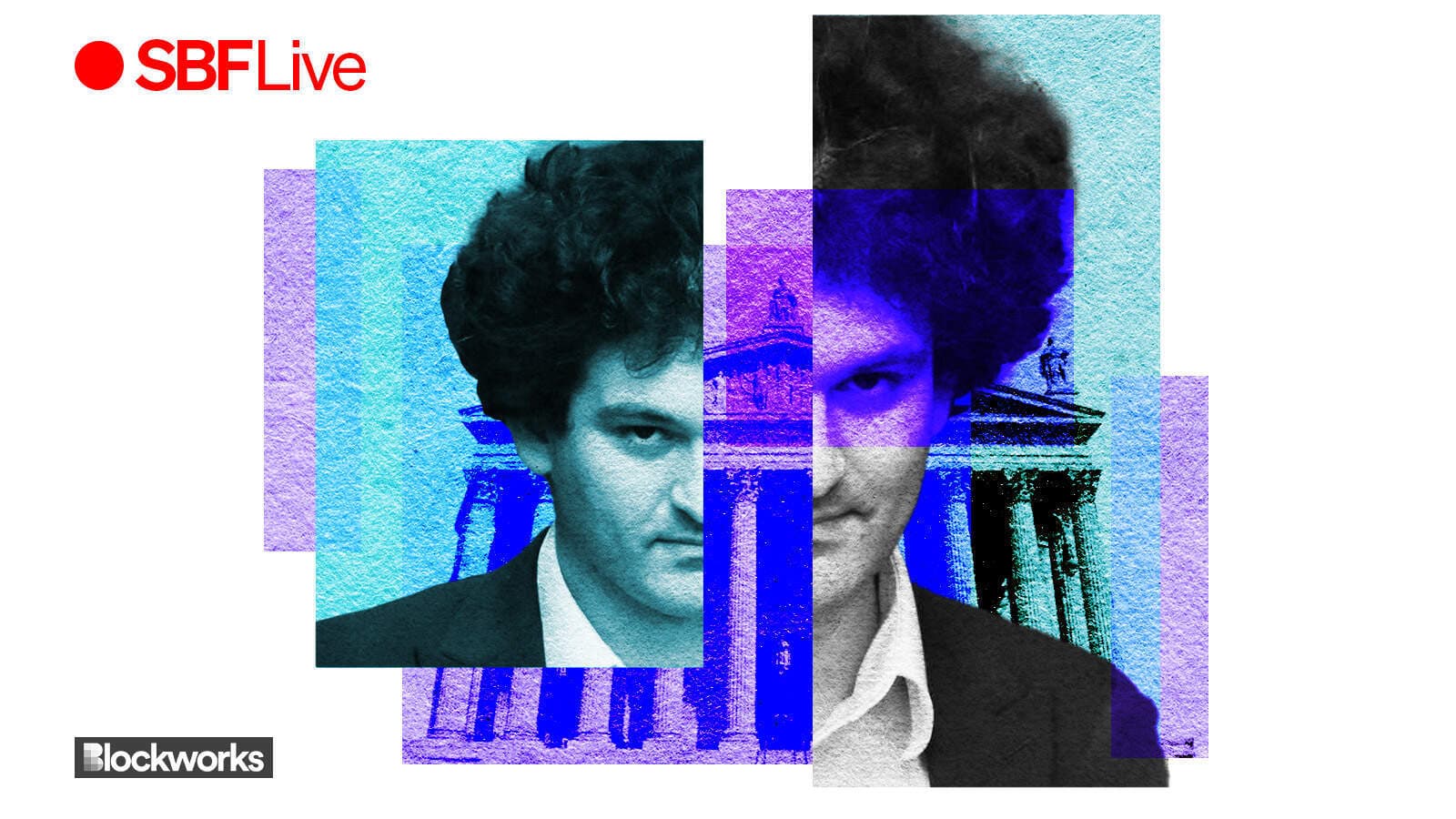To take or not to take (the stand), that is SBF’s question
Two Blockworks editors toss around the legal question of the day: Should Sam Bankman-Fried testify in court?

Artwork by Crystal Le
Sam Bankman-Fried should never, ever take the witness stand
When the criminal trial of Sam Bankman-Fried started earlier this month, everyone was (and still is) very excited to hear what the man himself might say.
That’s because there was already precedent for Bankman-Fried having something to say.
Right up until his arrest last December in the Bahamas, Bankman-Fried couldn’t stop talking. As FTX and Alameda went up in flames, Bankman-Fried continued to give interview after interview to anyone who would listen — a reporter friend at Vox, the New York Times, the New York Times Book Deal Conference, citizen journalist Tiffany Wong, Good Morning America, his biographer, a Bloomberg journalist writing a book about him…and that list is far from exhaustive.
In fact, Bankman-Fried’s arrest interrupted his plan to testify before the House of Representatives the next day. So clearly, he’s drawn to the microphone.
This is all to say that it’s very likely that Bankman-Fried himself wants to take the stand to tell his side. As an occasional courtroom observer, I can literally see him fidgeting to hold himself back as his defense attorneys misspeak or get chastised by the judge.
But there is a very good reason why Bankman-Fried should not get on the witness stand. And that is the fact that his entire narrative about how Alameda ended up using FTX user funds — the narrative that he tried so desperately to get across last December — has been roundly disproven by the prosecution over the past few weeks.
Bankman-Fried’s defense was naiveté: I didn’t know, I wasn’t responsible, there was no special treatment, I goofed up.
But for almost every one of Bankman-Fried’s public explanations, the prosecution has the group chat screenshots, code updates and Google Docs to prove him wrong.
This is not to weigh in on Bankman-Fried’s guilt — that’s besides the point.
But to put himself on the stand will mean that he either needs to repeat the story he told the world last December, which the prosecution has the receipts to disprove, or tell an entirely new story, which would paint him as a liar in the eyes of the jury.
Either way, Bankman-Fried on the stand cannot win. This is a case where the best defense is not good offense — Bankman-Fried should sit back, keep his mouth shut, and rely on his lawyers to have done a good enough job establishing reasonable doubt that he won’t spend the next 110 years in prison.
– Molly Jane Zuckerman, opinion editor
Sam Bankman-Fried should totally take the witness stand
Let’s preface this all by two things: I’m playing the devil’s advocate here, and like most of those following the court case from afar, I’ve got my open-in-case-of-SBF-testimony bag of popcorn ready.
To wit: Sam Bankman-Fried should take the witness stand this week.
While to many — including my esteemed colleague Molly Jane Zuckerman — this may seem like a disastrous course of action, I believe this path is essential if Bankman-Fried and his legal team have any hope of executing a narrative shift inside the courtroom. While I think it’s fair to say that they’ve lost whatever court-of-public-perception battle might’ve been fought, that’s besides the point.
Beyond the dizzying array of technical information and context-heavy documentation, the prosecution’s case is, at heart, the side of the story of FTX’s rise and fall presented by Caroline Ellison, Nishad Singh and other former FTX insiders and employees. I don’t think it’s exactly fair to characterize it as a they-said-he-said, but it’s in the neighborhood. The defense should certainly treat it as such.
Remember: The defense needs to produce doubt about the prosecution’s case. And they wouldn’t need to present a case at all if there wasn’t cause to believe that doubt already exists. Testimony from Bankman-Fried could — risks aside — provide another avenue for producing that doubt.
All eyes are on the defense this week given the court’s past rebuffing of its planned cast of expert witnesses. If the defense harbors any hope of keeping their client out of the clink for the next century, they must counter the messy, complex, emotional and very human tale put forth by the prosecution’s cooperating witnesses. They have to present something.
As risky a prospect as a Bankman-Fried testimony might seem, an appearance on the stand is a chance to counterbalance the he-said side of things.
One could also boil this choice down to a much simpler calculation: Given the consequences of failure, what does Bankman-Fried have to lose?
– Michael McSweeney, managing editor
Molly Jane Zuckerman is the opinion editor at Blockworks. She previously led educational content at CoinMarketCap and ran the news desk at Cointelegraph. Molly Jane is now based in New York after almost a decade in Russia, and can talk your ear off about Russia lit and detective novels. Contact Molly Jane: [email protected]
Michael McSweeney has worked in crypto media since 2014, including editorships at CoinDesk and The Block. In his spare time, he writes fiction and plays disc golf. Contact Michael at [email protected].
Get the news in your inbox. Explore Blockworks newsletters:
- The Breakdown: Decoding crypto and the markets. Daily.
- 0xResearch: Alpha in your inbox. Think like an analyst.






